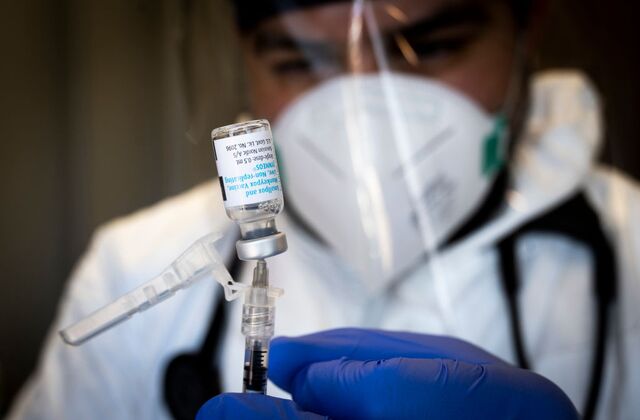As we enter 2025, medical experts and global health organizations are closely monitoring several deadly diseases that pose a significant threat to public health. Some of these illnesses have been around for centuries, while others are emerging threats fueled by modern lifestyles, climate change, and evolving pathogens.
In this article, we’ll explore the most dangerous diseases of 2025, their symptoms, how they spread, and what you can do to protect yourself and your loved ones.
1. COVID-19 and Emerging Variants
While the worst waves of the pandemic may be behind us, COVID-19 continues to evolve, with new variants emerging that could pose serious risks. Some mutations may be more transmissible, vaccine-resistant, or lead to severe illness. Health experts emphasize the importance of staying updated on vaccines, practicing hygiene, and wearing masks in high-risk areas to prevent outbreaks.
2. Influenza (Flu) and Drug-Resistant Strains
The seasonal flu remains a major health concern, especially with new, drug-resistant strains emerging. Each year, the flu leads to thousands of hospitalizations and deaths worldwide, particularly affecting children, the elderly, and those with weakened immune systems. Staying protected with annual flu shots, good hygiene, and a healthy immune system is crucial.
3. Tuberculosis (TB) and Multi-Drug Resistant TB (MDR-TB)
Tuberculosis, a bacterial infection that primarily affects the lungs, is still one of the deadliest infectious diseases worldwide. The rise of drug-resistant TB makes it even harder to treat. Symptoms include persistent cough, fever, weight loss, and night sweats. Prevention efforts focus on early detection, vaccinations, and proper antibiotic use.
4. Heart Disease and Stroke
Non-communicable diseases like heart disease and stroke remain the leading causes of death worldwide. Poor diet, lack of exercise, stress, and high blood pressure contribute to these conditions. Lifestyle changes such as eating heart-healthy foods, regular exercise, managing stress, and monitoring cholesterol levels are essential in prevention.
5. Cancer (Lung, Breast, and Colorectal Cancer)
Cancer continues to be a global health crisis, with lung, breast, and colorectal cancer among the most deadly. Many cancers are linked to lifestyle factors, environmental exposures, and genetics. Early detection through regular screenings, healthy eating, avoiding smoking, and reducing exposure to carcinogens can significantly lower the risk.
6. Diabetes and Its Complications
Diabetes, particularly Type 2 diabetes, is rising at an alarming rate due to poor diets, sedentary lifestyles, and obesity. If left uncontrolled, diabetes can lead to kidney failure, blindness, and heart disease. Managing blood sugar levels, maintaining a healthy weight, and exercising regularly can help prevent or control diabetes.
7. Antimicrobial-Resistant Infections (Superbugs)
Overuse of antibiotics has led to the rise of drug-resistant infections, also known as superbugs. Bacteria that were once easily treatable are now becoming immune to medications, making infections harder to cure. Experts warn against misusing antibiotics and emphasize the need for better hygiene and new treatments.
8. Respiratory Diseases (Pneumonia and COPD)
Chronic respiratory diseases, such as pneumonia and chronic obstructive pulmonary disease (COPD), remain a significant health concern. Smoking, air pollution, and infections contribute to these conditions. Protecting lung health through vaccinations, avoiding smoking, and reducing exposure to pollutants is essential.
9. Alzheimer’s Disease and Other Neurodegenerative Disorders
Neurodegenerative diseases like Alzheimer’s and Parkinson’s are becoming more common as the global population ages. These conditions cause memory loss, cognitive decline, and loss of motor function, significantly impacting quality of life. While there is no cure, healthy lifestyle choices, mental stimulation, and proper medical care can slow progression.
10. Dengue Fever and Other Mosquito-Borne Diseases
Dengue fever, transmitted by mosquitoes, has been increasing due to rising temperatures and urbanization. Symptoms include high fever, severe body aches, rashes, and bleeding complications. Preventative measures such as using insect repellents, eliminating standing water, and wearing protective clothing are key to reducing infection risks.
11. Monkeypox and Other Emerging Viral Threats
Monkeypox made headlines in recent years, and experts warn that it remains a potentially dangerous viral disease. It spreads through close contact with infected individuals and causes fever, skin rashes, and swollen lymph nodes. Proper hygiene, vaccination, and early detection are crucial in preventing outbreaks.
12. Liver Disease (Hepatitis and Fatty Liver Disease)
Liver diseases, including hepatitis B & C and non-alcoholic fatty liver disease (NAFLD), are growing health threats. Poor diets, alcohol consumption, and obesity contribute to liver damage, which can lead to cirrhosis and liver cancer. Eating a balanced diet, staying active, and avoiding excessive alcohol consumption can help protect liver health.
13. Kidney Disease and Renal Failure
Kidney disease often develops silently but can lead to kidney failure, requiring dialysis or transplantation. High blood pressure, diabetes, and dehydration are major contributors. Staying hydrated, eating kidney-friendly foods, and avoiding excessive salt intake can help maintain kidney function.
14. HIV/AIDS and New Strains of the Virus
HIV/AIDS remains a global epidemic, with millions of new infections every year. While medical advancements have made it manageable, new strains of HIV pose challenges in treatment. Practicing safe sex, regular testing, and early treatment are critical in preventing and managing the disease.
15. Autoimmune Diseases (Lupus, Rheumatoid Arthritis, and MS)
Autoimmune diseases occur when the immune system attacks the body’s own cells, leading to chronic pain, inflammation, and organ damage. While the exact causes remain unclear, genetics, environmental triggers, and infections play a role. Managing stress, eating an anti-inflammatory diet, and following medical treatments can help reduce symptoms.
Final Thoughts
The year 2025 presents both familiar and emerging health challenges, but awareness and prevention are key to staying safe. By understanding the risks associated with these deadly diseases, you can take proactive steps to protect yourself and your loved ones.
Regular checkups, a healthy lifestyle, and proper vaccinations can significantly lower your chances of serious illness. Staying informed and making conscious choices about your health is the best way to safeguard your future. 💙




